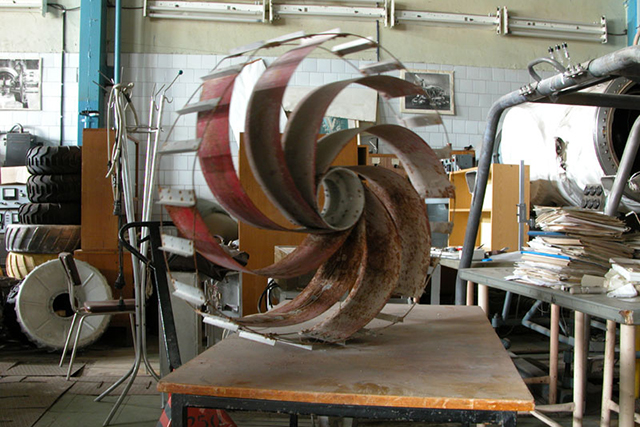The Search for Gravitational Waves
Physicist Nergis Mavalvala on the general theory of relativity, Hulse-Taylor system, and the way gravitational...

This is a test version of a wheel model that could have been commissioned for the “Lunokhod” lunar rover. The “Lunokhod” program, led by Aleksander Kemurdjian (USSR), put two of these vehicles on the Moon in 1969 and 1973. This was the first time in history that a vehicle was roving on a different celestial body other than Earth.
As there was no previous experience, different ways to move the rover were considered such as roving, crawling, even jumping and skiing. The wheel, one the greatest inventions in human history, was chosen for the moon rover. However, the type of wheel was a hard decision. Leningrad factory “VNIITransmash”, which originally designed chassis for tanks, produced different versions of wheels for the “Lunokhod” moon rover. The engineer team did not only test different materials, but also different geometry patterns. The most debatable questions were about the weight and the durability of the wheel. At that time there were no computer assisted design applications, so different prototypes were designed, built and tested for real. The wheel in the picture is just an example of how fancy these prototypes were. This one in particular used the spiral shape to provide suspension and the outer chain to provide grip.

The tests were conducted in the zones of fresh eruptions in the Kamchatka peninsula in the USSR. As the lunar soil composition was unknown at that time, there was a strong belief that this location was the best for testing as it allowed the best “Lunokhod” rover setup to be chosen.
A simple wheel presents more interest to the scientific community than the reader may suggest. Today planetary exploration is being conducted using robotic technology, while manned spaceflights are still impossible for multiple reasons. In this case the robots are tools for expanding human presence into space. Some of them are just static-type landers and are able to provide data only from a local area. The possibility to move a rover to different locations is key, not only for gathering a great variety of data, but also for performing a comparative analysis that would allow us to foster complete models. So the wheels like the one from the picture provide some freedom to expand human technology into space.
Even if we weren’t interested in space exploration, we should know that much of our everyday technology such as cellphones, diapers, dried food, thermal blankets etc., were developed or at least improved in connection with engineering investigations of space. And the reason for that is because space research provides many “extreme scenarios” for both scientists and engineers.
Research development of wheels conducted for the purpose of planetary exploration (new materials, software, quality assurance test, etc.) is very likely to be used for solving planet Earth’s problems. If something survives in harsh conditions, why wouldn’t it work in normal ones?

Physicist Nergis Mavalvala on the general theory of relativity, Hulse-Taylor system, and the way gravitational...

Astrophysicist Avi Loeb on structure formation in the early Universe, mapping hydrogen using a 21 centimeter l...

Combination of nanotechnology and scanning tunneling microscopy offers the prospect of dramatically improving ...